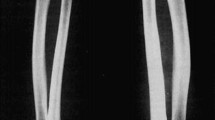Summary
The aim of this work was a preliminary assessment of the feasibility of using in vivo measurements of mechanical properties of bones to detect mineral loss and further to relate them to the tendency of the bone to fracture in the case of loss of minerals, such as in osteoporosis. Previous studies of bone strength in vitro have demonstrated that the decrease in bone strength in both the spine and the femur has strong correlation with the mineral content (BMC) measured with bone densitometry. It was demonstrated that loss of mineral in the bone is accompanied by substantial change of the main mechanical properties, decrease of the Young's modulus, and increase of the damping factor. The change in those properties is one order of magnitude greater than the change in bone density. Moreover, increase of bone density, by was of training, resulted in decrease of the damping factor that also was substantially greater than the change in density. The tests showed clearly that the change in mechanical properties was much greater than the change in bone mass density. This offers an attractive new alternative to the detection of bone mass loss as it appears that the change of the bone mass is well correlated to the change in these mechanical properties. In particular, the change in the damping factor of the material was found to be much more substantial than the bone density change. Therefore, the damping mechanism offers the vehicle for a direct assessment of the bone tendency to fracture due to the loss of mass, as tendency to fracture and mass loss are known to be related. Increasing bone density due to training showed similar results. The decrease in damping, though still much greater than the increase in density, is not as much different as in the case of loss of mass because there is a point when density increases to the extent that the bone becomes compact (no voids) and its damping would not drop further with increasing mass. This method, as compared with the bone density measurement methods, appears to have some definite advantages for monitoring the mineral loss in bones.
Similar content being viewed by others
References
Mazees RB (1983) Noninvasive methods for quantitating trabecular bone. In: Avioli LV (ed) The Osteoporotic Syndrome. Grune & Stratton, New York, pp 85–114
Mazees RB (1990) Bone densitometry for clinical diagnosis and monitoring. In: Osteoporosis. Elsevier, New York, pp 63–85
Dimarogonas AD, Haddad SH (1992) Vibration for Engineers. Prentice Hall, Englewood Cliffs, NJ
Nikiforidis G, Bezerianos A, Dimarogonas AD (1990) Monitoring of fracture healing with flexural and axial vibration analysis. J Biomechanics 23(4):323–330
Nikpur K, Dimarogonas AD (1988) Local compliance of cracked composite bodies. Composite Science Technology 32: 209–223
Author information
Authors and Affiliations
Rights and permissions
About this article
Cite this article
Dimarogonas, A.D., Abbasi-Jahromi, H. & Avioli, L.V. Material damping for monitoring of density and strength of bones. Calcif Tissue Int 52, 244–247 (1993). https://doi.org/10.1007/BF00298727
Received:
Revised:
Issue Date:
DOI: https://doi.org/10.1007/BF00298727




